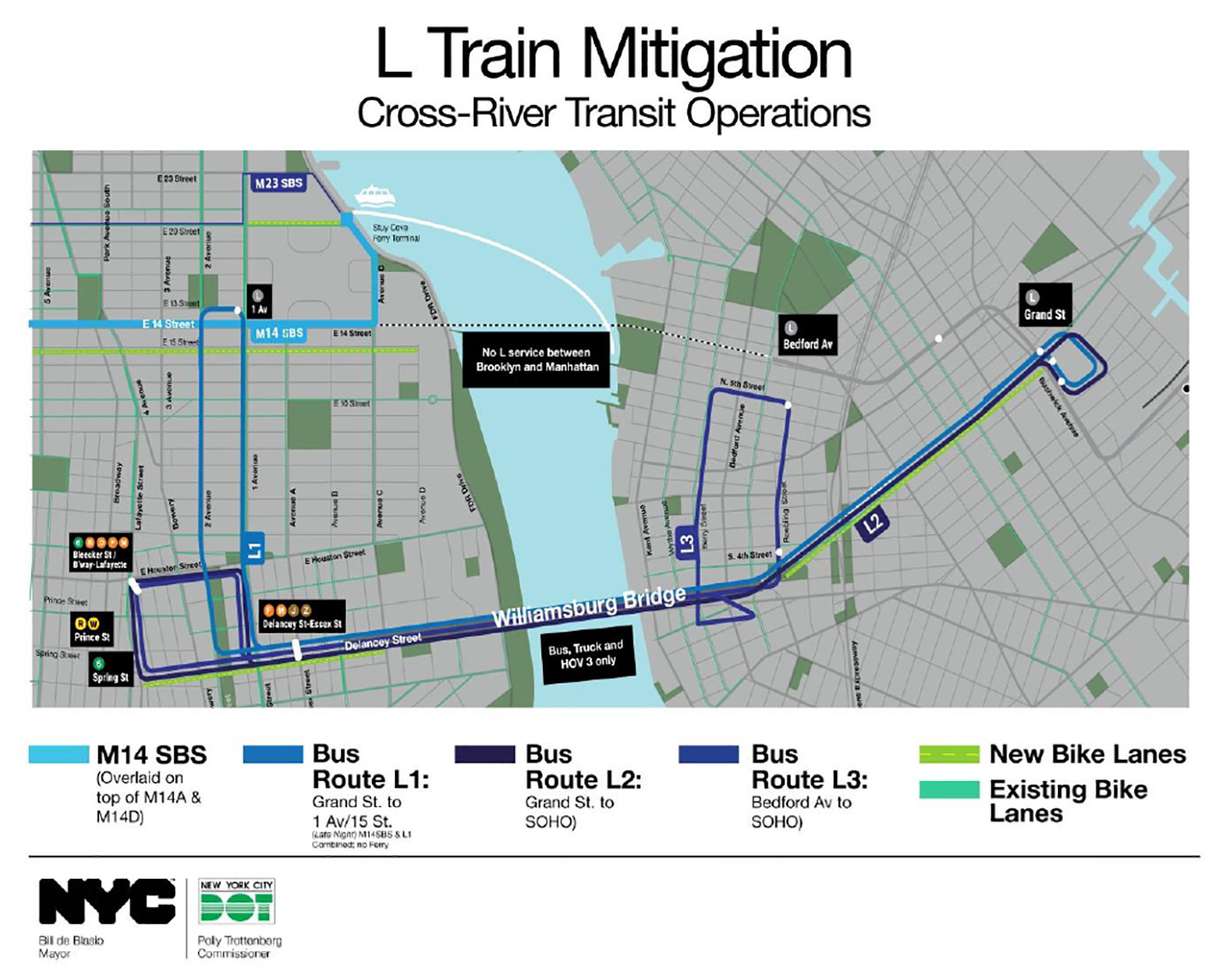L train riders: Here are your options for alternative transit during the 15-month shutdown

NEW YORK (WABC) -- The MTA released its plans Wednesday for how it will handle the L train's upcoming 15-month shutdown.
The train line closure is part of a construction project to repair damage to the Canarsie Tunnel caused during Superstorm Sandy. Salt water that flooded the tunnel caused the corrosion of cabling, power infrastructure and track equipment.
This will impact more than 400,000 daily L train riders, 225,000 of which travel between Manhattan and Brooklyn. Most riders -- about 70 to 80 percent -- are expected to take different subway lines.
Work is slated to begin in April 2019.
Some elected officials worry about the pain to commuters and those living in the city.
"This is a band-aid that we have to rip off. We can spend years doing piece work making sure people get over the bridge, but at the end of the day, this will inconvenience riders for a very long time," said Rafael Espinal, New York City Councilman.
To help mitigate mass congestion during the shutdown, several measures are being taken on nearby subway lines, bus lines and bridge traffic. Below are the details:
SUBWAY SERVICE:
- Increased service on the G and JMZ lines; additional station turnstile, stair and control area capacity at numerous stations on the G, JMZ and L lines
- Longer G and C trains to increase capacity (C train lengthening is also part of the broader Subway Action Plan)
- Weekends and overnights, M will run to 96 St/2 Av
- Free MetroCard transfers between Broadway G and Lorimer-Hewes JMZ
- Free MetroCard transfers between 3 train at Junius St and L train at Livonia Av
BUS SERVICE:
The Williamsburg Bridge will serve as the major connection for L-Alternative buses. In order to move buses quickly and not add to congestion, the City will implement measures to ensure reliable service. These include bus lanes that connect from the Grand Street Station in Bushwick and along the Brooklyn shuttle bus routes, over the Williamsburg Bridge, to and from Delancey Street and other key Manhattan connection points.
WILLIAMSBURG BRIDGE HOV3 LANES:
High Occupancy Vehicle (HOV3) restrictions will be added to the Williamsburg Bridge during rush hours at minimum, allowing more efficient movement over the bridge. HOV lanes were successfully used after 9/11, the 2005 subway strike and Superstorm Sandy. HOV-3 lanes, rather than HOV-2, are vital to both maintain viable bus speeds across the East River and to prevent an outsized shift of transit riders to for-hire vehicles that would lead to massive congestion at crossings.
14TH STREET CHANGES
No street will be more affected by the L Train disruption than 14th Street, and changes expanding access to pedestrians, bus riders, and cyclists will play a major role in moving L train riders quickly and efficiently.
"Busway": The core of 14th Street (3rd to 9thAvenues eastbound and 3rd to 8th Avenues westbound) will serve as an exclusive "busway" with rush hour restriction, with bus lanes and Select Bus Service (SBS) added there in the next year. An upgraded Select Bus Service treatment on 14th Street will bring temporary bus bulbs, offset bus lines, sidewalk expansion and tens of thousands of square feet in new pedestrian space.
Cycling: With the L closed in Manhattan, daily cycling volume is expected to double, and DOT will add Manhattan's first two-way protected crosstown bike lane to 13th Street. DOT will also create brand new pedestrian space on Union Square West from 14th to 15th Streets and 16th to 17thStreets and a pedestrianized street that features a new bike parking hub on University Place from 13thto 14th streets.
Other connections and changes:
Ferries, Citi Bike: The MTA will start a new ferry route connecting North Williamsburg to Stuyvesant Cove, which will be the terminus of the M14 SBS. DOT will also improve cycling connections to the Stuyvesant Cove ferry landing and East River Greenway, as well as a protected bike link this spring on Delancey Street between Allen Street and the Williamsburg Bridge. DOT will work with Motivate on its Citi Bike capacity to help service inconvenienced subway users, such as increased bike inventories and valet services to help move riders.
Grand Street, Brooklyn: DOT is looking to make major changes to a street that will serve as a major bus and bicycle corridor to the Williamsburg Bridge.
Subway Enhancements: DOT will also add new crosswalks, bike parking and pedestrian space to the Myrtle and Broadway corridors near the J/M/Z subway lines. With G train ridership expected to grow dramatically, DOT will improve crossings around the Nassau Avenue G train stop.
There will be public meetings in order to get community feedback.
----------












